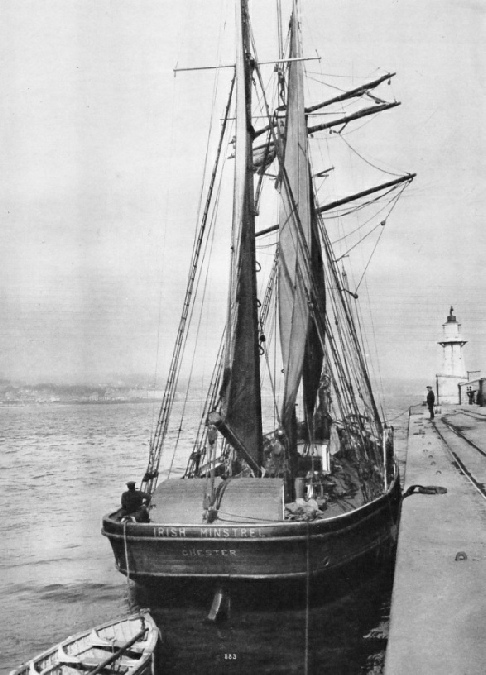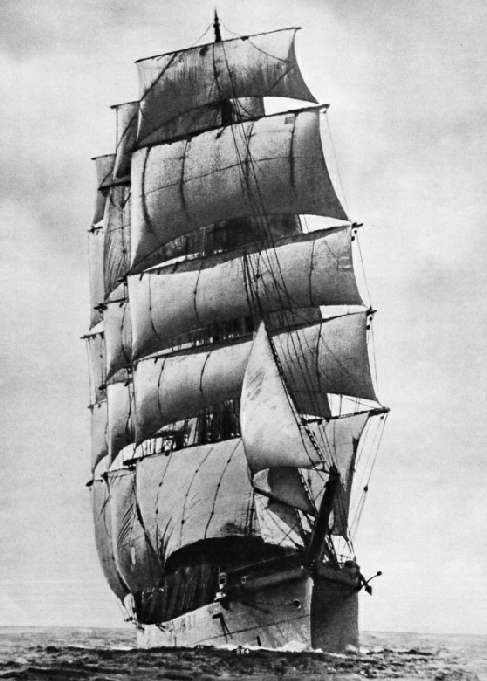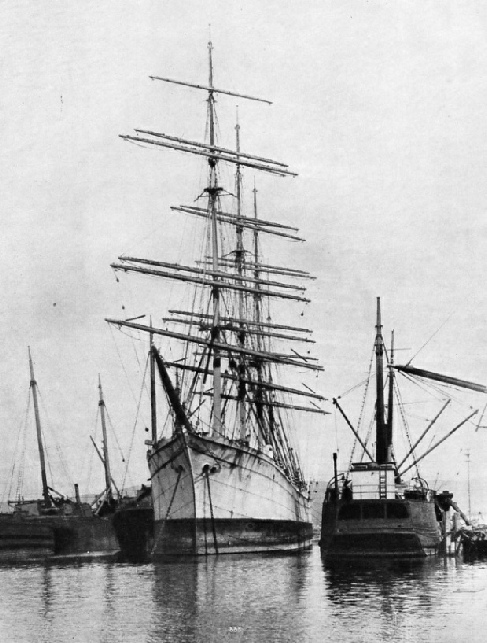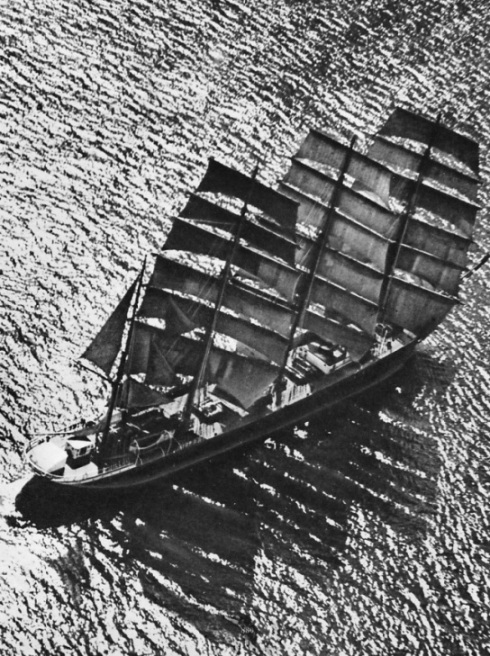
© Shipping Wonders of the World 2012-



Part 28
Part 28 of Shipping Wonders of the World was published on Tuesday 18th August 1936.
It included a centre photogravure supplement featuring the last days of sail, which formed part of the article of the same title.
The Cover
This week’s cover shows the SS Diplomat at Eastham, on the Manchester Ship Canal. Some of the bridges over the canal were too low to allow the Diplomat to pass underneath, and it was necessary to remove her funnels to allow her to clear them. The Diplomat’s gross tonnage is 8,240, her length is 482 ft 1 in, her breadth 58 ft 5 in and her depth 33 ft 5 in.
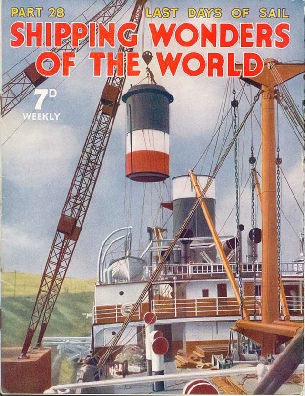
Contents of Part 28
Diving Adventures
Concluded from part 27.
LMS Steamship Services
Since the London Midland and Scottish Railway acquired control of numerous services between Great Britain and Ireland, as well as of certain Firth of Clyde services, many interesting paddle and screw steamers have been replaced by fine modern vessels. Many of the cross-channel packets that ply round the coasts of Great Britain are being replaced by fast motorships and turbine steamers. This chapter gives a brief sketch of the interesting early vessels which formed the cross-channel fleets owned and controlled by various railway companies now forming part of the LMS Railway. In the last fifteen years as many as thirty new steamers have been put on these services by the LMS in the place of the older vessels.
A Mediterranean Passenger Ship
A description of the Chella, built at La Seyne, near Toulon, and claims to be the fastest vessel on her route, with a speed of about 21½ knots. She has a length between perpendiculars of 426 feet, a beam of 62 feet, a depth of 37 feet and a draught of 22 feet. Her gross tonnage is 9,000 and her net tonnage 4,800.
This is the twentieth article in the series on Merchant Ship Types.
Last Days of Sail
The twentieth century, with its remarkable scientific progress, its desire for speed and its overpowering economic forces, is now seeing the inevitable disappearance of the large sailing vessel. In a few years’ time there will be few sailing ships left on the seas except those used as training ships or, of course, the innumerable yachts and small pleasure craft. This chapter explains why it is economically impracticable for sailing ships to compete with the fast powered vessels which satisfy the requirements of modern business conditions. This chapter is exceptionally well illustrated with a fine photogravure section.
Last Days of Sail (photogravure supplement)
Contents of Part 28 (continued)
Durban: South Africa’s Eastern Port
The harbour of Durban is formed by a natural lagoon, the only opening on a long stretch of the eastern coast of South Africa. A deserted wilderness just over a century ago, Durban now handles more cargo tonnage than any other South African port.
This chapter is the eighth article in the series Great Ports of the World.
Hazards of the Sea
The sailing vessels that were used as trap-ships and decoys during the war of 1914-18 were even more exposed to peril than many of the steamers. Sailing ships were frequently at the mercy of winds and tides, and it was more difficult for them to conceal their identity.
This chapter is the third article in the series Mystery Ship Adventures. The article is concluded in part 29.
The Germaine
A FRENCH BARQUE OF 1,930 TONS GROSS, the Germaine was built at Havre, France, in 1900, as the Ville de Belfort. She had a length of 260 feet and a beam of 39 ft 5 in.
The Irish Minstrel
ONE OF THE SURVIVORS of the British coastal sailing vessels, the Irish Minstrel, a wooden three-masted schooner of 154 tons gross. She was built at Dundalk, Co. Louth, Ireland, in 1879. Her length is 99 ft 12 in and her beam 25 feet. This photograph was taken at Newlyn, near Penzance, Cornwall.
